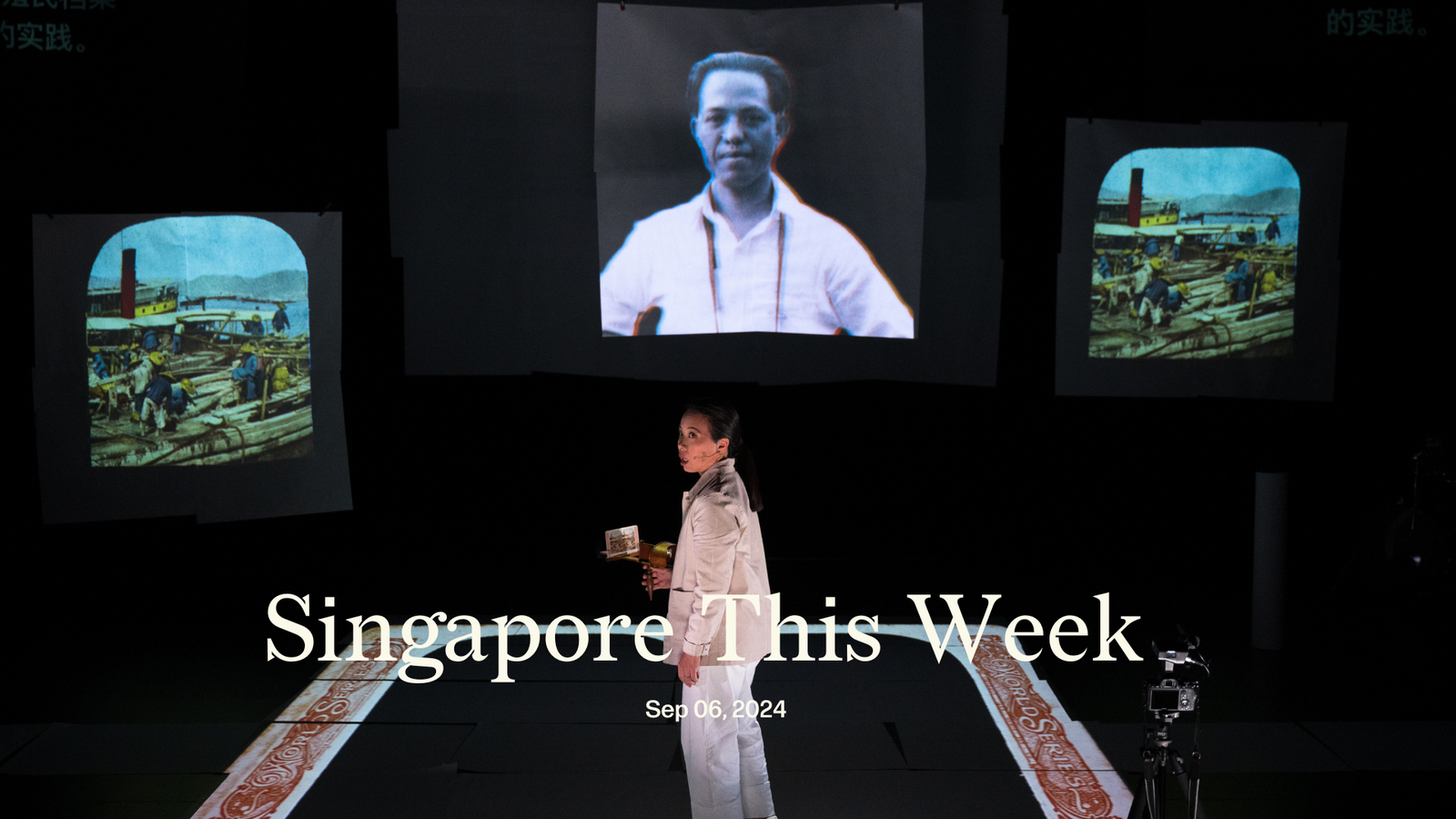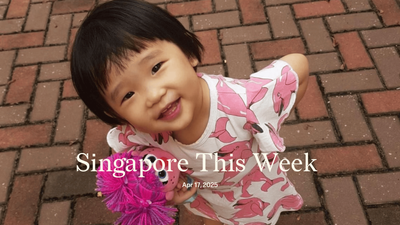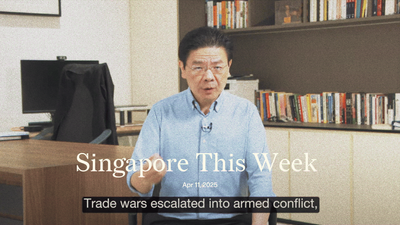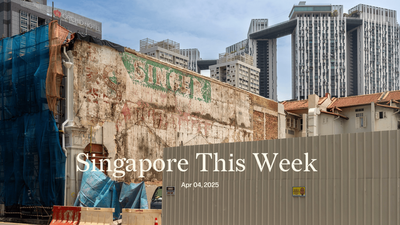Politics: ‘I hope to spark off a mild ‘India fever’’
Narendra Modi, divisive Indian prime minister, is in Singapore. On the agenda: deeper trade ties, greater India-ASEAN cooperation, “friendship photos”. Senior Indian leaders are no stranger to these shores. Jawaharlal Nehru, the first prime minister, who has a commemorative bust outside the Asian Civilisations Museum, made his maiden voyage to Singapore in 1937. He returned in 1946, to better understand the condition of Indian nationals here. Malaya, he said with typical lyricism, has “a spirit of steel even though that spirit is clad in rags.”
Indira Gandhi, the fourth Indian prime minister and Nehru’s daughter, made a whistlestop tour of Singapore in 1968, but the man responsible for setting economic passions aflame is PV Narasimha Rao. Soon after taking charge in 1991, Rao and Manmohan Singh, his finance minister (and later prime minister), liberalised the Indian economy. Eager to woo the West, Rao turned east, hoping to lure American investors through Singapore’s close ties to the world’s largest economy. Singapore reciprocated. Lee Kuan Yew told Goh Chok Tong, who’d just succeeded him as prime minister: “This is your chance. Push it. Let’s get them into Asean [sic].” That did not happen, but the die was cast. During his 1993 National Day Rally speech, Goh announced “I shall visit India later this year and bring some businessmen along with me. I hope to spark off a mild ‘India fever’.”
A year later, Rao became the first Indian prime minister to deliver the Singapore Lecture. Lee compared him to Deng Xiaoping, the Chinese premier who, similarly, had sparked the transformation of an insular, socialist economy into an export-oriented, market-based one. Here’s when the torrid love affair faced its first challenge. After the lecture, Rao was asked about the troubled relationship between democracy and development. “I have often said that the remedy for the ills of democracy is more democracy, not less,” he responded, to thunderous applause. “[…]Lee,” wrote the journalist Sunanda K Datta-Ray, present on the day, “was not amused.” A mere hiccup. Rao was so enamoured of Singapore that some started calling him “Goh-getter”; he himself would often point out that the “Simha” in his name was analogous to the “Singa” in Singapore. Lion.
Trade between the countries has grown from an inflation-adjusted US$4.4bn (S$6bn) in 1995, Rao’s penultimate year in power, to over US$33bn (S$43.5bn) in 2022, with a slew of agreements signed in the interim, including the Comprehensive Economic Cooperation Agreement (CECA) in 2005—contentious because of its possible impact on immigration. For free-market advocates, Modi may have come bearing gifts but it was Rao and Goh who got the party started.
Politics: Larry wants more women
How does Singapore fare in terms of female representation in politics? On the one hand, we’ve never had a female leader (nor even a contender), unlike many other democracies, including Australia, Canada, Germany, India, Taiwan, the UK, and every Scandinavian country. On the other, roughly 30 percent of our current elected parliamentarians are women. It’s a great improvement from zero in the 1970s-early 1980s, above the current global average (26.9 percent), and not far from that of Europe and North America (one-third).
Lawrence Wong, prime minister, announced this week that the ruling People’s Action Party (PAP) wants to field more women in the next general election, which must be called by November 2025. “Equality for women does not mean that men get less,” he said at the PAP Women’s Wing conference. “Gains that women make in society do not mean that men will inevitably lose out.” Sim Ann, member of Parliament (MP) and Women’s Wing chairwoman, responded to a question about the target number of women candidates by saying that the party doesn’t believe in quotas for representation and leadership. “It is very important for us to know that we hold these positions because of our merit and our ability,” she said.
The last seven years have been tricky for Singapore’s female politicians. The legacy of Halimah Yaacob, Singapore’s first female president (a largely ceremonial role), will inevitably be marred by the troubling circumstances of her ascent—only Malays were allowed to contest the 2017 presidential election, and she won in a walkover—as well as the troubling circumstances of her descent: she could have contested for re-election last year, but seemingly stepped aside for Tharman Shanmugaratnam, perhaps because the PAP believed he was a stronger contender in an open contest. As loved as she was, many will also remember her as a political tool.
Meanwhile, the sensationalist circumstances under which MPs Raeesah Khan and Cheng Li Hui, as well as politician Nicole Seah resigned have (unjustifiably) drawn more attention than all their prior good work. While they’ve all effectively disappeared from the public eye, both the men involved in those latter two affairs, by contrast, appear to be easing back into public life. Josephine Teo, the much-maligned minister for digital development and information, is rumoured to be favoured by Wong. Her possible rehabilitation in the coming years, alongside higher PAP female representation, may indeed point the way to greater gender equity in Singaporean politics. It’ll probably be a while, though, before the PAP chooses a woman as its secretary-general, as the Progress Singapore Party did early this year.
Society: Blackface is funny, meh?
Just a month ago, (what seems like) an ethnic Chinese student at Raffles Institution donned a delivery rider’s uniform along with the face mask of an African-American basketballer—to celebrate Racial Harmony Day. And last week, an ethnic Chinese car salesman at JDM Automobile Carros Centre made a blackface video on Facebook in which he seemingly mocks the accents and gestures of African people (images and clips of them were also stitched onto the video). After Wake Up Singapore criticised the video, The New Paper (TNP) also investigated and reported on it, and then the dealership deleted it. The dealer’s manager does not believe there’s any grounds for a report because the content is just to attract people. (Presumably commerce is a moral defence for racism in Singapore Inc.) “Our videos are more about the content,” she told TNP. “We’re not out to be racist, it’s not in the intention.” And with that, TNP, which also included in its report a video mocking an African person’s long name (which inspired the salesperson), gave the manager the last word.
Ah, yes, “intention”. The Singapore school of racism is analogous to the Donald Trump “many black friends” one. In this world view, without any stated, verifiable intent by the alleged racist, hurt, harm, and impact are mere concoctions of a “woke” strawberry generation. In 2022, when Goh Chok Tong, then emeritus senior minister, wished Muslims “Selamat Hari Raya Puasa” by posting a photograph of his wife and himself alongside a brown-faced scarecrow, there was no racist intent. In 2021, when Seah Kian Peng, speaker of the house, celebrated Kamala Harris’s visit to Singapore by announcing that her name spelt backwards is Alamak, there was no racist intent. In 2019, when Mediacorp released a “brownface” advertisement, there was no racist intent. In 1992, when Choo Wee Khiang, PAP MP, told Parliament that when he drives through Little India, it feels like he’s in complete darkness “not because there was no light, but because there were too many Indians around there”, there was no racist intent.
And in 1989, when Lee Kuan Yew said that Singapore’s economy would suffer if its Chinese majority was not maintained, there was also no racist intent. So, dear ethnic minorities, please get with the programme. Government immigration policies will ensure that this multi-racial paradise will always have a Chinese supermajority. And supposed racism without intent is usually either a joke or, in the case of the great Lee, the plain truth.
Society: Who ask you wear like that?
“[T]he victim of a sexual assault is actually assaulted twice—once by the offender and once by the criminal justice system.” It’s an observation that rings especially true when a defence counsel tries to discredit a survivor with an aggressive and inappropriate line of questioning. Countries like Australia, Canada and the US have developed rape shield laws which recognise that intrusions into the irrelevant sexual history of a survivor are “prejudicial and embarrassing”.
While Singapore doesn’t have similar rape shield laws, the High Court recently made explicit the no-go areas for defence counsels when cross-examining a sexual assault complainant. Vincent Hoong, high court judge, acknowledged that the proper administration of justice required the court to “assiduously maintain” the balance between preserving the accused’s right to a fair trial, while ensuring that the dignity, security and well-being of witnesses aren’t compromised. He was emphatic that the court will not tolerate a line of inquiry about what the sexual assault survivor was wearing if it implied that they had “invited” the assault. He also noted that the purpose of cross-examination isn’t to harass, abuse or cause unnecessary discomfort to a witness. In cases of sexual offence, Hoong warned that the “unwarranted questioning” of the complainant’s credibility, while “delving into irrelevant personal history” or “insinuating blame” can retraumatise the survivor and perpetuate harmful stereotypes about sexual violence.
Hoong “set an important precedent”, one that advances a “survivor-centred and trauma-sensitive approach in trials,” said the Association of Women for Action and Research (AWARE). Singapore has made headway in how its judicial system handles sexual assault cases. In 2011, it finally repealed Section 157(d) of the Evidence Act 1893—which provides that “when a man is prosecuted for rape…, it may be shown that the prosecutrix was of generally immoral character.” And more recently in 2019, passed the Criminal Law Reform Act, removing the legal immunity for marital rape. It’s hoped that Hoong’s judgement will further encourage more victims to come forward—only three in 10 survivors of sexual crime at AWARE’s Sexual Assault Care Centre choose to file police reports or feel safe enough to do so. Even as it makes abundantly clear that asking a witness questions like, “Why couldn’t you just keep your knees together?”—as did a Canadian judge—will not be tolerated.
History weekly by Faris Joraimi
Visual artist Sim Chi Yin’s interdisciplinary performance, “One Day We’ll Understand” concluded its three-day run last Sunday, a culmination of her decade-long project on the Malayan Emergency. Sim’s grandfather, an anti-colonial activist at the height of this armed insurgency to overthrow the British, was among many Malayan Chinese leftists mass-deported to China. Though he was suppressed from family memory, a faded photograph of him with a box camera spurred Sim’s research. I was not in town to watch the performance—reviewed favourably by Shawn Hoo of The Straits Times (ST)—but I’ve seen portions of it presented in various other settings and iterations. A video by Sim of exiled revolutionaries singing the Internationale in Chinese, for example, was shown at the Gillman Barracks in 2021, alongside sheets of lyrics to other communist anthems. One of them, “Goodbye Malaya”, composed in 1941, was sung in unison from the decks of a ship by leftists banished to China, away from their homeland by birth and adoption. I saw the video work again at the international pavilion of this year’s Venice Biennale, where it was shown as part of the “Disobedience Archive” next to Indonesian artists Irwan Ahmett and Tita Salina’s “Bila Anda Tiba Anda Menyesal”: a 45-minute film-essay about Batam, borders and the bizarre maritime geopolitics of the Singapore Straits. There was a kind of kinship between the neighbouring works, fracturing myths of territory and national history.
But I also always found the sonic memory of those communist songs a compelling feature of Sim’s “counter-archive”. In the absence of a paper trail, these scattered materials serve as resources to reassemble memory and a bridge to the past. In “The Suitcase is a Little Bit Rotten”, Sim inserts her grandfather and infant son into a series of archival images, where they occasionally cross paths. I attended “Methods of Memory - Time Travels in the Archives”, a lecture-performance Sim delivered in 2023 at the Asia Art Archive in Brooklyn and a precursor to the Esplanade performance. Sim’s gathered ephemera—family lore, sound, image and artefacts—made for a moving account of her search for elusive origins. Her voice and slides took us from Singapore to the Malayan jungles, over the South China Sea to her ancestral village in Guangdong, and back: a kind of reverse migrant hagiography. Audiences may still find her forays into critical theory too academic or impersonal for the story’s intimacy. Is that such a bad thing? It’s rigorous, it’s anti-monumental; the kind of historical art we need as more Raffles statues go up.
Arts: Grave importance
Bukit Brown Cemetery may never get to rest in peace, but it’s getting a moment of silence in the form of a memorial installation that opened to the public last month. Resembling a mini Stonehenge, the installation comprises three concentric rings of tombstones and other unclaimed grave artefacts. Stand in the centre of the cluster, and you’ll be haunted by the live sounds of the cemetery reflected back at you by the relics of the dead. “Sounds of the Earth” was designed by visual artist Chen Sai Hua Kuan after three rounds of participatory design workshops involving relatives of those buried in Bukit Brown, former residents of a nearby kampung, members of heritage and nature groups, as well as researchers and frequent visitors. It’s located right next to the scar of an expressway that cleaved the cemetery in two in 2018, following years of construction, delays and rare public pushback. The Singapore Heritage Society (SHS) and the Nature Society (Singapore) both released position papers suggesting alternatives to the cemetery’s excavation, and making the case for its significance both as a carbon sequestration and heritage site—but these went unheeded. “The Government’s success [in] housing this nation has always rested on spaces of the dead giving way to the living,” Fauzy Ismail, president of SHS, told The Straits Times (ST).
The memorial installation, a collective effort by SHS and community group all things Bukit Brown (atBB), is part of years-long advocacy movements to remind the state and the public about the impact of relentless new development on one of Singapore’s oldest municipal burial sites. Anthropologist Hui Yew-Foong led the documentation of some 4,000 graves that were disinterred by Lornie Highway, and the professor believes the cemetery meets several criteria for nomination as a World Heritage site. An atBB volunteer, Fabian Tee, believes the cemetery offers us a more complete narrative of Singapore’s history, especially pre-independence: “Shouldn’t we look further to see who our founders were? Only the 1959 group? You mean the people before that didn’t build hospitals, didn’t set up schools, didn’t fight for women’s rights?” We’ll have to live with this anticipatory grief for a while longer: the rest of the cemetery remains earmarked for future housing under the Urban Redevelopment Authority’s current Long-Term Plan. The terminal condition of Singapore is that we must constantly grieve something long before it’s dead.
Arts: Caught in the act
Wading naked into brackish water reeking of dead fish, then getting dunked in it without warning. Dangling upside down from a tree, your head several feet from the ground. Filming a rape scene with an untrained actor. These are the true Singapore horror stories that gigging actors have come forward to talk about in the darker corners of a predatory industry that exploits the mantra: “do what you love, and you’ll never work a day in your life”. Actors, primarily from the film sector, told RICE Media that the lack of actors’ unions, official safety standards and clear financial regulations has led to egregious conditions both on- and off-set, eroding confidence in a job that otherwise brings great personal fulfilment and professional satisfaction. Lizzy Talbot, a pioneering intimacy coordinator from the UK (whose work you’ll have seen in blockbuster bodice-rippers such as “Bridgerton”), said during a Singapore-based workshop: “What we want to do is separate the personal from the professional, but it’s so difficult because we have a culture of blurring the two in the arts industry.”
One in three arts workers identifies as self-employed, significantly higher than the national average of one in five. While this autonomy and flexibility is a bonus, it can also translate to intermittent income, a lack of legal literacies, and dramatic power asymmetries between employer and employee. There have been both top-down and ground-up movements to improve protocols in the arts and entertainment industries when it comes to freelance contractors’ rights and legal recourse. The National Arts Council’s Arts Resource Hub has consolidated materials and offered seminars around issues such as copyright protection and capability development. Artists have come together to share knowledge and build communities of practice around more nascent vocations, such as intimacy coordination. The Consent Collaborative, for instance, hopes to “mainstream consent culture” in both arts and education spaces. Esplanade recently hosted a one-day programme for artists to assess their mental and emotional wellbeing; and local collective CITRUS practices also organised a festival around the invisible processes of artmaking, including discussions and workshops on staging intimacy ethically. To equip the performing arts industry with the safeguards it deserves, an all-encompassing and sustainable approach to care work demands both the muscle of emotional support and the backbone of infrastructural rigour.
Tech: Carro switches gears to recruitment
Carro, the homegrown used-car unicorn, is making an unexpected expansion into the recruitment sector through its acquisition of Kaidee, a Thai classified ads platform. Carro hopes to transform its recruitment department, responsible for over 5,000 employees, from a cost centre into a revenue generator. OKAI, their combined new venture, will be powered by—you guessed it—Artificial Intelligence, in order to streamline HR hiring processes and improve candidate-employer matching through a “chat-first” approach. Through it prospective job seekers can discuss salary, benefits and other administrative details before recruitment even begins. At the same time, employers can also chat with promising candidates on the platform. The consolidation of such conversations, hitherto dispersed across various messaging platforms, is supposed to reduce HR officers’ workload.
OKAI, soon to be spun off as a separate entity, is looking to raise around US$8m (S$10.4m). It will be counting on Kaidee’s substantial user base and brand recognition in Thailand to help it overtake established players like Bossjob and Glints, as well as industry giants Indeed and Glassdoor. Since its soft launch in February as Kaidee Jobs, it has already recruited over 150 employees for more than 100 clients, including Pomelo, Shopee and TikTok. As Carro gears up to expand into Malaysia and Singapore, other tech firms will keenly follow its fortunes to understand if similar moves could help them reduce costs and add to their toplines in a tighter fundraising market.
Tech: The benefits of connecting big and small firms
How are Singapore-based start-ups improving lives in rural communities across South-east Asia? One example is DayaTani, an agritech firm founded last year, which uses data science to help improve yields for farmers across Java—for instance, more accurate recommendations on ideal fertilisers for each crop and locality. Thus far it has worked with over 350 smallholder farmers and increased yields by 30 percent. Among other new technologies, an agronomist chatbot, available via its app or WhatsApp, helps farmers diagnose crop issues. DayaTani’s product development was partly accelerated through its participation in the Corporate Venture Launchpad (CVL) programme by Singapore’s Economic Development Board (EDB). Through CVL, it collaborated with Japfa, an industrial agri-food conglomerate, and tapped on the latter’s extensive farmer network to discover relevant challenges and pain points.
Since its launch in May 2021, CVL has supported 24 such companies including Carsome, ENGIE, Standard Chartered and TÜV SÜD in launching 14 new ventures. And last week, in recognition of these successes, EDB announced that it’s increasing its funding for CVL 3.0, from US$15.4m (S$20m) to US$24.6m (S$32m), to better lubricate these corporate-start-up partnerships. CVL offers co-funding for manpower and professional services, along with support for pilot projects to ease the oft-cited issues of misaligned expectations and incompatible processes between traditional businesses and agile young companies. Start-ups, with their dynamism, can bring immense value to established companies; the latter in turn can help young firms scale up through corporate partnerships. As the global business landscape evolves rapidly, such initiatives may be crucial in maintaining Singapore’s competitive edge and fostering a more dynamic, innovative business ecosystem.
If you enjoy Jom’s work, do get a paid subscription today to support independent journalism in Singapore.







